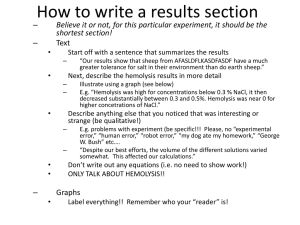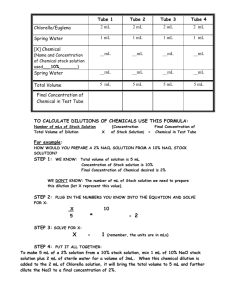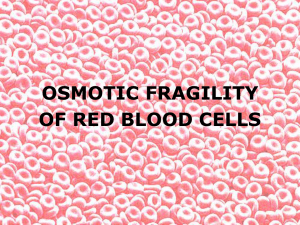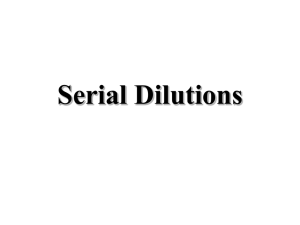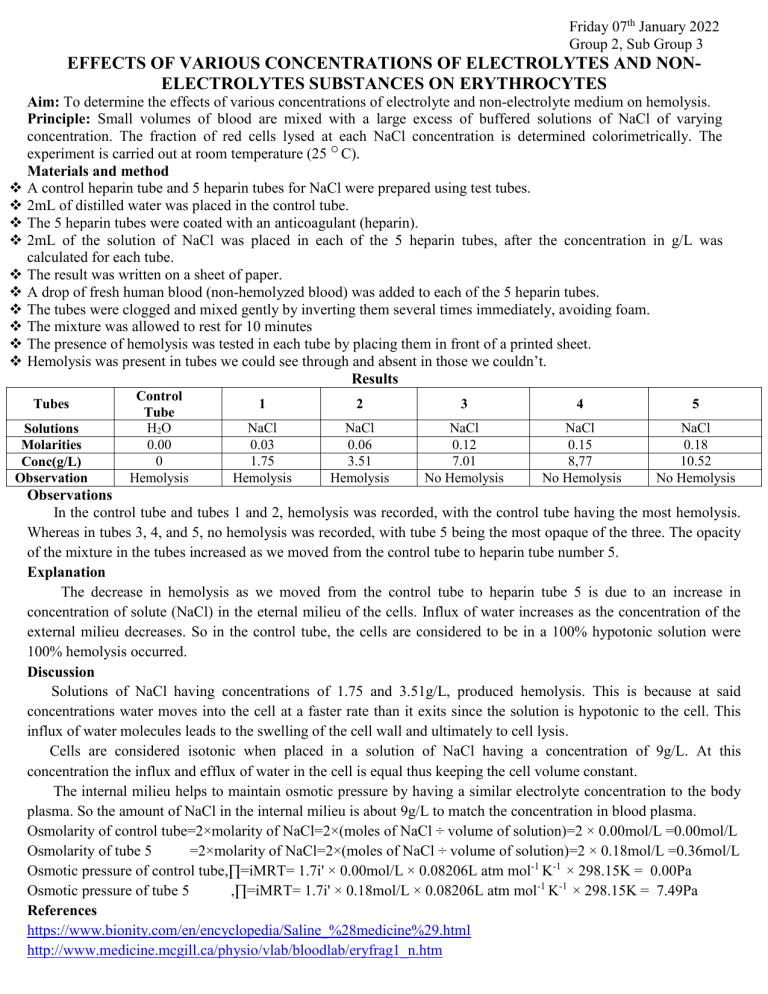
Friday 07th January 2022 Group 2, Sub Group 3 EFFECTS OF VARIOUS CONCENTRATIONS OF ELECTROLYTES AND NONELECTROLYTES SUBSTANCES ON ERYTHROCYTES Aim: To determine the effects of various concentrations of electrolyte and non-electrolyte medium on hemolysis. Principle: Small volumes of blood are mixed with a large excess of buffered solutions of NaCl of varying concentration. The fraction of red cells lysed at each NaCl concentration is determined colorimetrically. The experiment is carried out at room temperature (25 C). Materials and method A control heparin tube and 5 heparin tubes for NaCl were prepared using test tubes. 2mL of distilled water was placed in the control tube. The 5 heparin tubes were coated with an anticoagulant (heparin). 2mL of the solution of NaCl was placed in each of the 5 heparin tubes, after the concentration in g/L was calculated for each tube. The result was written on a sheet of paper. A drop of fresh human blood (non-hemolyzed blood) was added to each of the 5 heparin tubes. The tubes were clogged and mixed gently by inverting them several times immediately, avoiding foam. The mixture was allowed to rest for 10 minutes The presence of hemolysis was tested in each tube by placing them in front of a printed sheet. Hemolysis was present in tubes we could see through and absent in those we couldn’t. Results Tubes Solutions Molarities Conc(g/L) Observation Control Tube H2O 0.00 0 Hemolysis 1 2 3 4 5 NaCl 0.03 1.75 Hemolysis NaCl 0.06 3.51 Hemolysis NaCl 0.12 7.01 No Hemolysis NaCl 0.15 8,77 No Hemolysis NaCl 0.18 10.52 No Hemolysis Observations In the control tube and tubes 1 and 2, hemolysis was recorded, with the control tube having the most hemolysis. Whereas in tubes 3, 4, and 5, no hemolysis was recorded, with tube 5 being the most opaque of the three. The opacity of the mixture in the tubes increased as we moved from the control tube to heparin tube number 5. Explanation The decrease in hemolysis as we moved from the control tube to heparin tube 5 is due to an increase in concentration of solute (NaCl) in the eternal milieu of the cells. Influx of water increases as the concentration of the external milieu decreases. So in the control tube, the cells are considered to be in a 100% hypotonic solution were 100% hemolysis occurred. Discussion Solutions of NaCl having concentrations of 1.75 and 3.51g/L, produced hemolysis. This is because at said concentrations water moves into the cell at a faster rate than it exits since the solution is hypotonic to the cell. This influx of water molecules leads to the swelling of the cell wall and ultimately to cell lysis. Cells are considered isotonic when placed in a solution of NaCl having a concentration of 9g/L. At this concentration the influx and efflux of water in the cell is equal thus keeping the cell volume constant. The internal milieu helps to maintain osmotic pressure by having a similar electrolyte concentration to the body plasma. So the amount of NaCl in the internal milieu is about 9g/L to match the concentration in blood plasma. Osmolarity of control tube=2×molarity of NaCl=2×(moles of NaCl ÷ volume of solution)=2 × 0.00mol/L =0.00mol/L Osmolarity of tube 5 =2×molarity of NaCl=2×(moles of NaCl ÷ volume of solution)=2 × 0.18mol/L =0.36mol/L Osmotic pressure of control tube,∏=iMRT= 1.7i' × 0.00mol/L × 0.08206L atm mol-1 K-1 × 298.15K = 0.00Pa Osmotic pressure of tube 5 ,∏=iMRT= 1.7i' × 0.18mol/L × 0.08206L atm mol-1 K-1 × 298.15K = 7.49Pa References https://www.bionity.com/en/encyclopedia/Saline_%28medicine%29.html http://www.medicine.mcgill.ca/physio/vlab/bloodlab/eryfrag1_n.htm
